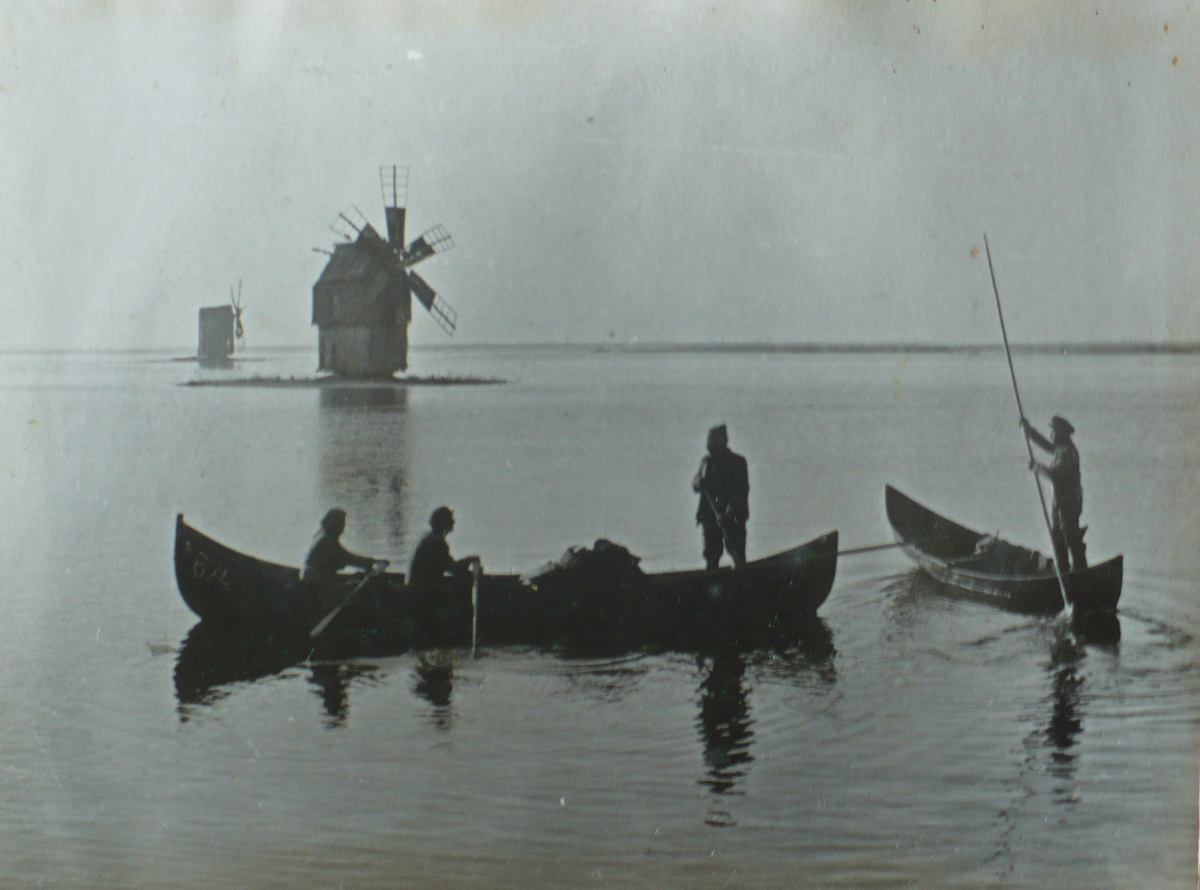The Etnographic Research in Dobrogea Ad-Hoc Collection is the result of field research and actions to rescue certain artefacts of pre-industrial techniques in this region of Romania. This ad-hoc collection reunites items from two different archival fonds: one accumulated during the activity of preserving the heritage originating from villages undergoing collectivisation, and the other created during research in the villages which were about to be totally destroyed due to the construction of the Danube–Black Sea Canal. The first part of the collection was mainly created by Hedwig Ulrike Ruşdea and her colleagues, most of them employees of the Museum of Folk Technics in Sibiu. It includes the findings of their research on the technology of the windmills used in Dobrogea, their significance for the local rural society, and the results of their endeavours to rescue them. Ruşdea was a specialist in pre-industrial mills. In the 1960s and 1970s, she researched and rescued a series of windmills in the region, which were at risk of being destroyed by the regime’s agricultural modernisation drive following the completion of the collectivisation process in the region in 1957. This had been achieved seven years before the official end of collectivisation in Romania, so Dobrogea served as a model of collectivisation and a source of emulation for the rest of the country. From 1949 to 1957, over 300 Collective Agricultural Farms (Gospodării Agricole Colective or in short GAC) had been created in the two counties of Dobrogea: Constanţa and Tulcea (Iordachi 2009, 104). Among the equipment seized from private farmers and included in the patrimony of the newly created GAC were windmills, a genuine symbol of the region. They were at risk of being dismantled and destroyed as a result of the rapid communist modernisation in agriculture. In the period from 1964 to 1977, Ruşdea, together with a team of ethnographers, architects, and photographers, conducted research on the social and economic role of windmills among the ethnically diverse communities living in north-east Dobrogea. In the 1960s and 1970s, the region was still a genuine ethnic and cultural mosaic, inhabited by Romanians, Tatars, Russian Lipovans, Turks, Germans, and Aromanians (also called Vlachs). The research also focused on the technical structure of windmills, as well as on their building and working principles. All these activities are reflected in a number of files on windmills in Dobrogea compiled between 1964 and 1977. They include data on the culture and history of villages that had windmills, on their economic and social role, and on their numbers and positioning, as well as stories and legends about windmills, and technical drawings and sketches created for the reassembly of the rescued windmills at the ASTRA Museum.
The second part of this ad-hoc collection focuses on field research conducted from 1976 to 1984 in villages that were destroyed during the building of the Danube–Black Sea Canal in Dobrogea. In fact, the Romanian communist leadership had ordered its construction as early as 1949 out of a desire to emulate similar large-scale building projects in Stalin’s USSR. In 1955, however, in the context of de-Stalinisation, the construction works were abandoned due to the project’s lack of economic viability. In 1976, the project was re-started on Ceauşescu’s orders as it reflected his megalomaniac tendencies. It was ultimately completed at great material and human cost in 1984. From 1976 to 1984, during the building works, a multi-disciplinary team from the Museum of Folk Technics including ethnographers, sociologists, geographers, and photographers conducted field research in villages that were slated for destruction as they lay in the path of the canal. The files in the Etnographic Research in Dobrogea Ad-Hoc Collection include statistics on the population of the villages under examination, field reports with data on beliefs and folk customs recorded by ethnographers, sketches and maps of localities, photographs of traditional dwellings, churches, triptychs, and churchyards that were later destroyed. By taking photos of churches, churchyards, and triptychs, the employees of the museum ran the risk of being sanctioned for researching and rescuing data on negative aspects of what the regime’s propaganda machine labelled as one of the greatest technological achievements of the so-called “Golden Age.” All these files have been preserved in the archives of the Museum of Folk Technics, which in February 1990 became the ASTRA Museum. From 2004 to 2006, the archivists of the ASTRA Museum archived the fonds dealing with ethnographic research in Dobrogea, the most important one being the Hedwig Ruşdea Fonds. Within this fonds, the archivists gathered the files reflecting the research conducted by this specialist in molinology.
The most important manuscripts of the Hedwig Ruşdea Fonds were published in 2012 in a volume edited by Valerie Deleanu and Delia Voina, entitled Morile de vânt din Dobrogea: Hedwig Ulrike Ruşdea în memoria etnomuzeologiei româneşti (The windmills of Dobrogea: Hedwig Ulrike Ruşdea in the collective memory of Romanian ethno-museology). As for that part of the collection which deals with the villages that were destroyed during the building of the Danube–Black Sea Canal, its files have been preserved and were archived by the employees of the ASTRA Museum between 2004 and 2012 in various fonds of the ASTRA Museum archives, such as the Photographic Fonds (Fondul Fotografic).

